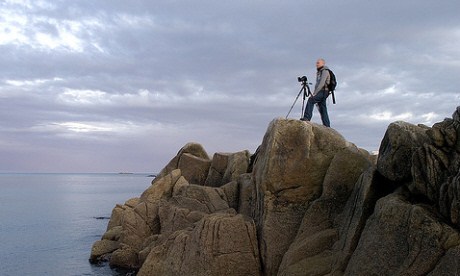
Steve Davey lets you in on his top seven tips for filming better movies – with your DSLR
Chances are you already own a video camera. Actually, you may have two or three. Video capability is now shoehorned into every mobile phone, compact camera and tablet.
And now more serious cameras are in the frame – you’ll struggle to buy a DSLR that doesn’t boast full HD 1080p video. But how possible is it to shoot good video without a dedicated video camera?
Good quality video takes two things: good equipment and good technique. The standard of HD 1080p video is actually not that great: 1080 simply indicates that the video picture is 1920 x 1080 pixels. This is the same as a 2MP camera, which means so-called HD video is within the reaches of most digital imaging devices. What will make the difference between the HD1080p video claimed by compacts and that actually delivered by a quality DSLR is the size and quality of the sensor and lens. That’s not to say you can’t shoot good video with a compact camera, just that if you’re serious about filming, you should use a DSLR and a good lens.
The most effective thing you can do to improve your filming is to think about what you’re doing. Good filming is not necessarily a spontaneous thing: to create a cohesive and entertaining movie you will need to take a series of shots that can be cut together.
For the best results you will need to take various clips and structure them to tell a greater story. Editing software has become cheaper and more functional. Try Windows Live Movie Maker (PC) or iMovie (Mac): there are better options, but these basic ones are either bundled with your computer or can be downloaded cheaply.
If you rush around waving your camera at everything, you’ll have a real task trying to edit it into anything decent. Think about what you are trying to show and the best way to film it. Try to get a good establishing shot, some close-ups, shots that show movement and people shots. Watch your favourite TV shows for inspiration.
Although sometimes you’ll see ‘point of view’ shots that emulate what someone sees when they are walking/bungy-jumping etc, most shots are completely static. Get a tripod: if you have a ten-second shot, handholding will always show some movement.
Only film with a moving camera if there is a good reason to, such as panning a large landscape; otherwise lock everything down.
You seldom see zoom shots on TV yet, in amateur films, people zoom in and out all the time. Think of a zoom lens as a way to set different single focal lengths, not as a visual tool. It will make your movie a lot easier to watch.
A pan is the steady movement of your camera, either to follow a moving object or to show something that is wider or taller than your frame. Pans need to be used in a controlled way, and with great care. Only pan in one direction; if possible, use a video head on a tripod – this will give a much smoother pan. If you’re stitching together a series of pans, always pan in the same direction: left to right works well, as this is the way we read.
Take longer shots than you think you’ll need – often when editing you’ll require more film to make a shot work. Let the camera run on for five or six seconds. If there is anything significant moving in the shot, allow it to run out of the frame, rather than cutting off when it’s part way through.
Also, bank a few generic shots – a few minutes of passing traffic or people in a market – which you can cut in anywhere you need some local colour.
The use of DSLRs for filming has spawned a range of bolt-on gadgets. If you’re planning on handholding, you’ll need some sort of support: perhaps a simple circular rig (eg the Manfrotto Fig Rig) or a shoulder ‘gun-style’ mount – these will help you handhold the camera without camera-shake.
DSLRs fall down on sound. Bad sound will ruin your film – if you want to use any sort of local noise (rather than dubbing music over your movie), invest in a good quality external microphone.
Insider Secrets: top tips for budding photographers | Blogs... More
How to buy the right camera for you | Advice... More
Top 10 DSLRs for travellers | Inspire me... More
Russ Malkin: Top tips for budding documentary makers | Interviews... More